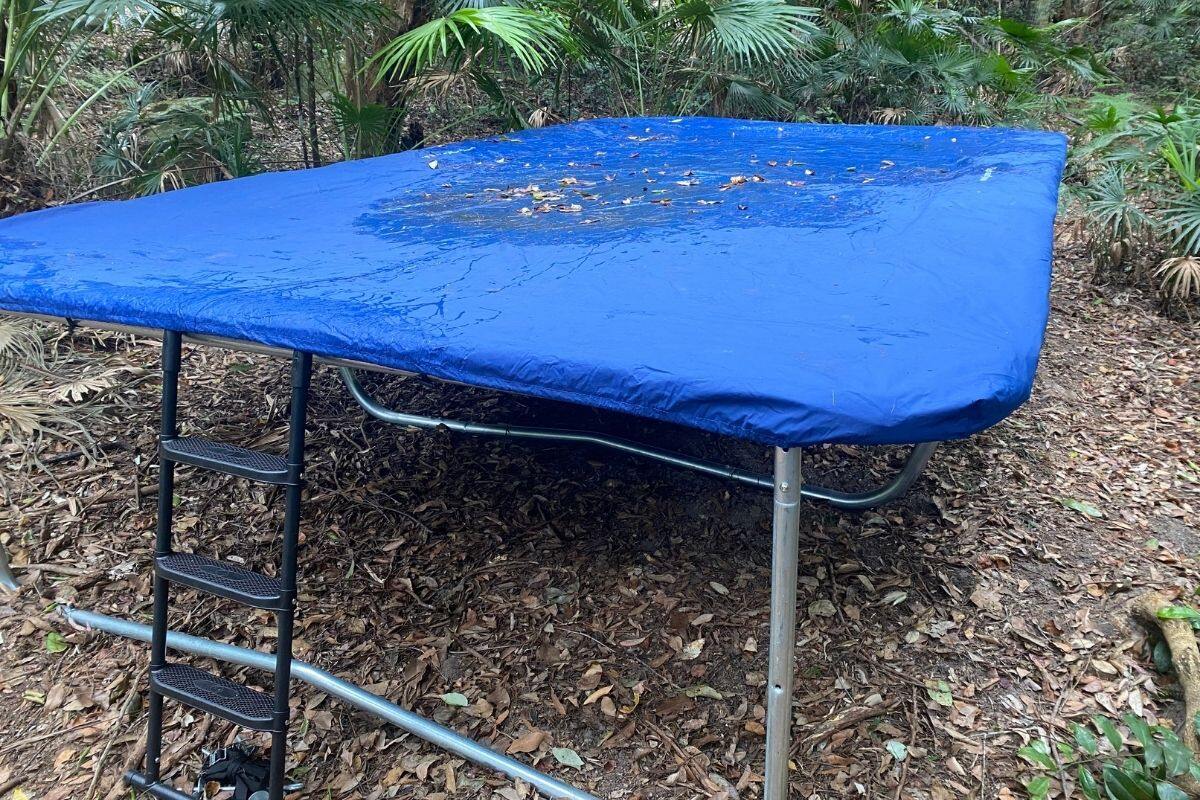Home>Renovation & DIY>Home Renovation Guides>How To Protect Backsplash From Grease


Home Renovation Guides
How To Protect Backsplash From Grease
Modified: February 18, 2024
Learn effective ways to protect your backsplash from grease with our home renovation guide. Keep your kitchen looking fresh and clean for longer.
(Many of the links in this article redirect to a specific reviewed product. Your purchase of these products through affiliate links helps to generate commission for Storables.com, at no extra cost. Learn more)
Choose the Right Material for Your Backsplash
When it comes to protecting your backsplash from grease, choosing the right material is crucial. The backsplash serves as a protective barrier between your kitchen walls and the cooking area, preventing grease and food splatters from staining or damaging the wall surface. Here are some materials to consider for your backsplash:
-
Tile: Ceramic and porcelain tiles are popular choices for backsplashes due to their durability and easy maintenance. They are resistant to heat and moisture, making them ideal for the kitchen environment. Additionally, tiles come in a variety of colors, patterns, and textures, allowing you to customize the look of your kitchen while providing a practical solution for grease protection.
-
Stainless Steel: This sleek and modern option is not only visually appealing but also highly resistant to grease and easy to clean. Stainless steel backsplashes create a seamless and hygienic surface that can withstand the rigors of a busy kitchen. They are particularly popular in contemporary and industrial-style kitchens.
-
Glass: Glass backsplashes offer a clean and reflective surface that can brighten up the kitchen while providing an easy-to-clean barrier against grease. They are available in a range of colors and can be customized to fit your kitchen's aesthetic. Additionally, glass is non-porous, making it resistant to stains and easy to maintain.
-
Natural Stone: Materials such as marble, granite, and travertine can add a touch of elegance to your kitchen while offering excellent protection against grease. Natural stone backsplashes are not only durable but also heat-resistant, making them a practical choice for behind stovetops. However, it's important to seal natural stone regularly to maintain its resistance to grease and moisture.
-
Vinyl Wallpaper: For a budget-friendly and easy-to-install option, vinyl wallpaper can provide a protective layer against grease while offering a wide range of designs and patterns. It's important to choose a washable and scrubbable vinyl wallpaper specifically designed for kitchen use to ensure effective grease protection.
By carefully selecting the material for your backsplash, you can effectively safeguard your kitchen walls from grease and cooking splatters while enhancing the aesthetic appeal of your culinary space. Each material offers unique benefits, so consider your cooking habits, maintenance preferences, and overall kitchen design when making your choice.
Key Takeaways:
- Choose the right backsplash material like tile, stainless steel, or glass to protect your kitchen walls from grease and add a stylish touch to your cooking space.
- Install a protective barrier and use a splatter screen while cooking to keep your backsplash clean, making kitchen cleanup easier and more enjoyable.
Read more: How To Remove Grease From Granite Backsplash
Install a Protective Barrier
Installing a protective barrier is a proactive approach to safeguarding your backsplash from grease and food splatters. This preventive measure not only preserves the visual appeal of your kitchen but also simplifies the cleaning process, saving you time and effort in the long run. Here's how you can effectively install a protective barrier for your backsplash:
1. Apply a Sealant
Before installing your backsplash, it's essential to apply a high-quality sealant to the surface. This sealant acts as a protective barrier, preventing grease and moisture from seeping into the material and causing stains or damage. Depending on the type of backsplash material you've chosen, such as natural stone or grout, there are specific sealants designed to enhance durability and resistance to grease. By sealing the backsplash, you create a barrier that repels grease, making it easier to wipe off any splatters during cooking.
2. Utilize a Backsplash Panel
Consider installing a dedicated backsplash panel made of stainless steel or tempered glass. These panels provide an additional layer of protection against grease and heat, effectively shielding the underlying wall surface. Stainless steel panels are particularly popular for their sleek and modern appearance, while tempered glass panels offer a reflective and easy-to-clean surface. By incorporating a dedicated backsplash panel, you create a seamless and resilient barrier that minimizes the impact of grease splatters, ensuring that your kitchen walls remain pristine.
3. Extend the Backsplash Height
Extending the height of your backsplash can significantly enhance its protective capabilities. By raising the backsplash to cover a larger area of the wall, you create a more extensive shield against grease and food splatters. This is especially beneficial for areas behind the stovetop, where cooking activities generate the most splatters. Whether you opt for additional tile layers or a taller stainless steel or glass panel, extending the backsplash height provides comprehensive coverage, reducing the likelihood of grease reaching the wall surface.
Read more: How To Remove Grease From Glass
4. Maintain Proper Ventilation
Adequate ventilation plays a crucial role in minimizing the accumulation of grease on your backsplash. Installing a high-quality range hood or exhaust fan above the cooking area helps to capture airborne grease particles and redirect them outside, preventing them from settling on the backsplash. By maintaining proper ventilation, you can reduce the frequency and intensity of grease buildup, prolonging the cleanliness and integrity of your backsplash.
By implementing these protective measures, you can fortify your backsplash against grease and food splatters, ensuring that your kitchen remains both visually appealing and easy to maintain. These proactive steps contribute to a cleaner and more hygienic cooking environment, allowing you to enjoy your culinary pursuits without worrying about the aftermath of grease and splatters.
Regularly Clean and Maintain Your Backsplash
Maintaining a clean and grease-free backsplash is essential for preserving the aesthetic appeal and hygiene of your kitchen. Regular cleaning and maintenance not only prevent the buildup of stubborn grease stains but also prolong the lifespan of your backsplash material. By incorporating simple yet effective cleaning practices into your routine, you can ensure that your backsplash remains a pristine and functional element of your culinary space.
1. Daily Wipe Down
A daily wipe down is the first line of defense against grease accumulation on your backsplash. After cooking, take a few minutes to gently wipe the surface with a damp cloth or sponge to remove any visible grease or food splatters. This quick and easy task prevents grease from hardening and becoming more challenging to clean over time. Additionally, it maintains the visual appeal of your kitchen, ensuring that your backsplash remains a welcoming and tidy backdrop to your culinary endeavors.
2. Use Mild Cleaning Solutions
When it's time for a more thorough cleaning, opt for mild cleaning solutions that are safe for your specific backsplash material. For example, a mixture of warm water and mild dish soap is suitable for most backsplash surfaces, including tiles, stainless steel, and glass. Avoid harsh chemicals or abrasive cleaners, as they can damage the finish and integrity of the backsplash. By using gentle cleaning solutions, you can effectively remove grease and grime without compromising the quality of the material.
Read more: How To Clean Grease From Range Hood
3. Grout Maintenance
If your backsplash features tiled surfaces with grout lines, it's important to pay attention to grout maintenance. Over time, grout can become susceptible to grease absorption and discoloration. To combat this, regularly clean the grout lines with a grout brush and a mild grout cleaner. Additionally, applying a grout sealer at least once a year helps to protect the grout from grease penetration and maintains its original color and texture.
4. Polish and Protect
For stainless steel and glass backsplashes, consider using specialized polish or protective coatings to maintain their luster and resistance to grease. These products create a barrier that repels grease and facilitates easier cleaning. Regularly applying a suitable polish or protective coating ensures that your stainless steel or glass backsplash remains sleek and free from stubborn grease buildup.
5. Preventative Maintenance
In addition to regular cleaning, implementing preventative measures can significantly reduce the impact of grease on your backsplash. Utilize splatter screens while cooking to minimize the dispersion of grease onto the backsplash. These screens act as a barrier, preventing grease from reaching the walls and minimizing the cleaning effort required afterward.
By incorporating these cleaning and maintenance practices into your kitchen routine, you can effectively combat grease buildup and preserve the pristine condition of your backsplash. A well-maintained backsplash not only enhances the visual appeal of your kitchen but also contributes to a clean and hygienic cooking environment, allowing you to fully enjoy the heart of your home without the worry of grease-related issues.
Use a Splatter Screen While Cooking
When it comes to minimizing grease splatters and protecting your backsplash, utilizing a splatter screen during cooking is a simple yet highly effective strategy. A splatter screen, also known as a grease guard or splatter guard, is a mesh shield that is placed over the cooking pan or skillet to contain hot oil and prevent it from dispersing onto surrounding surfaces, including your backsplash.
By incorporating a splatter screen into your cooking routine, you create a physical barrier that intercepts grease particles, preventing them from reaching the walls and backsplash of your kitchen. This proactive approach not only reduces the frequency of grease cleanup but also minimizes the potential for stubborn stains and buildup on your backsplash.
When selecting a splatter screen, opt for a durable and heat-resistant model that is compatible with the size of your cookware. The mesh should be fine enough to capture small grease droplets while allowing steam to escape, ensuring that your food cooks evenly without compromising flavor or texture.
Using a splatter screen is particularly beneficial when cooking foods that are prone to splattering, such as bacon, sautéed dishes, or fried items. As the hot oil sizzles and pops within the pan, the splatter screen acts as a protective shield, intercepting the airborne grease and containing it within the cooking vessel.
In addition to safeguarding your backsplash, a splatter screen contributes to a safer and more controlled cooking environment by reducing the risk of hot oil splatters that can cause burns or accidents. It also helps to maintain the cleanliness of your stovetop and surrounding surfaces, promoting a tidier and more manageable kitchen space.
To maximize the effectiveness of a splatter screen, ensure that it is positioned securely over the pan, covering the entire cooking surface. This prevents any potential grease escape and ensures comprehensive protection for your backsplash and kitchen walls.
By integrating a splatter screen into your culinary practices, you can significantly mitigate the impact of grease splatters on your backsplash, minimizing the need for frequent cleaning and maintenance. This proactive measure not only preserves the visual appeal of your kitchen but also simplifies the task of keeping your culinary space clean and inviting.
Incorporating a splatter screen while cooking is a practical and proactive way to protect your backsplash from grease, allowing you to enjoy the cooking process without the worry of potential mess and cleanup.
Frequently Asked Questions about How To Protect Backsplash From Grease
Was this page helpful?
At Storables.com, we guarantee accurate and reliable information. Our content, validated by Expert Board Contributors, is crafted following stringent Editorial Policies. We're committed to providing you with well-researched, expert-backed insights for all your informational needs.














0 thoughts on “How To Protect Backsplash From Grease”